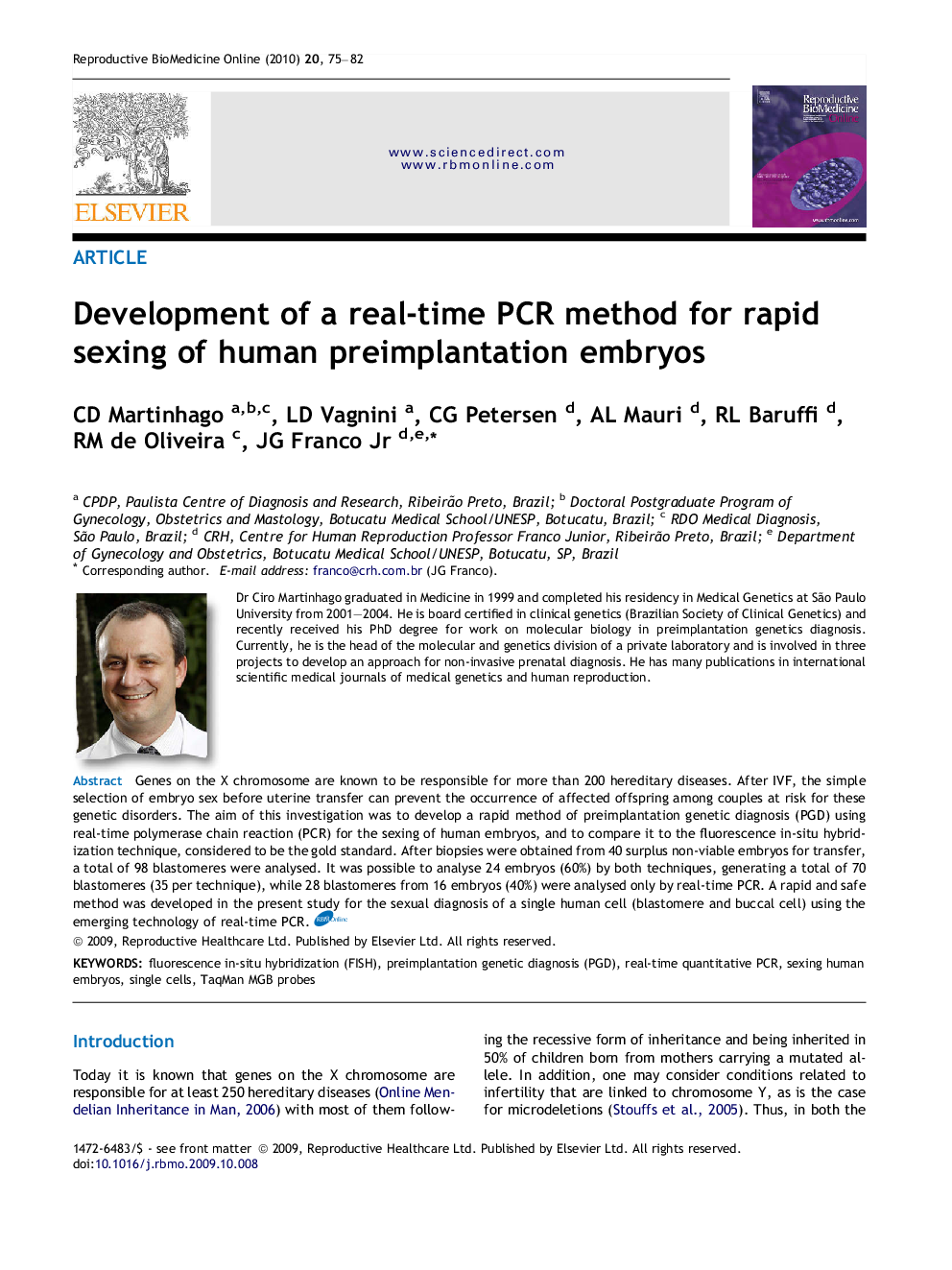| Article ID | Journal | Published Year | Pages | File Type |
|---|---|---|---|---|
| 3971912 | Reproductive BioMedicine Online | 2010 | 8 Pages |
Genes on the X chromosome are known to be responsible for more than 200 hereditary diseases. After IVF, the simple selection of embryo sex before uterine transfer can prevent the occurrence of affected offspring among couples at risk for these genetic disorders. The aim of this investigation was to develop a rapid method of preimplantation genetic diagnosis (PGD) using real-time polymerase chain reaction (PCR) for the sexing of human embryos, and to compare it to the fluorescence in-situ hybridization technique, considered to be the gold standard. After biopsies were obtained from 40 surplus non-viable embryos for transfer, a total of 98 blastomeres were analysed. It was possible to analyse 24 embryos (60%) by both techniques, generating a total of 70 blastomeres (35 per technique), while 28 blastomeres from 16 embryos (40%) were analysed only by real-time PCR. A rapid and safe method was developed in the present study for the sexual diagnosis of a single human cell (blastomere and buccal cell) using the emerging technology of real-time PCR.
